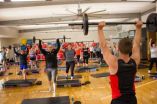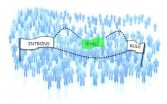(Press-News.org) CORVALLIS, Ore. – Even as policy makers and health experts point to an increased need for exercise, more than half of four-year colleges and universities in the United States have dropped physical education requirements compared to historic levels.
Almost every U.S. college student was required to take physical education and exercise requirements in the 1920s; today, that number is at an all-time low of 39 percent, according to a new study.
Oregon State University researcher Brad Cardinal, lead author of the study, examined data from 354 randomly selected four-year universities and colleges going back to 1920, a peak year with 97 percent of students required to take physical education. The results are in the current issue of Research Quarterly for Exercise and Sport.
"We see more and more evidence about the benefit of physical activity, not just to our bodies, but to our minds, yet educational institutions are not embracing their own research," Cardinal said. "It is alarming to see four-year institutions following the path that K-12 schools have already gone down, eliminating exercise as part of the curriculum even as obesity rates climb."
More than 34 percent of adolescents and teens ages 12-19 are overweight and more than 17 percent are obese. These rates have roughly doubled since 1980, according to the 2012 Shape of the Nation Report.
Cardinal, who is a professor of exercise and sport science at OSU and a national expert on the benefits of physical activity, said research shows that exercise not only improves human health, but it also improves cognitive performance.
"Brain scans have shown that physical activity improves the area of the brain involved with high-level decision making," he said. "In addition, we know employers often are concerned about employee health, in part because physically active employees attend work more and tend to perform better."
Cardinal's own university, Oregon State University, still requires physical education courses. He said requiring physical education sets the tone for students to understand that being active and healthy is as important as reading, writing and math. Cardinal believes even requiring just one or two exercise courses can at least jump-start a student into thinking about a healthy lifestyle as part of their overall college experience and later life.
"There is a remarkable disconnect in that we fund research as a nation showing that physical activity is absolutely critical to academic and life success, but we aren't applying that knowledge to our own students," he said.
While no research has conclusively shown why this downward trend is happening at universities, Cardinal said it is likely a result of shrinking budgets and an increased focus on purely academic courses, similar to what has happened at public elementary, middle, and high schools.
However, he noted that the median physical education budget for schools in the United States is only $764 per school year in K-12 and 61 percent of physical education teachers report an annual budget of less than $1,000. Yet, obesity will cost the United States $344 billion in medical-related expenses by 2018, about 21 percent of the nation's health-care spending.
While many universities offer recreation classes and fitness centers, Cardinal said, those facilities are often intimidating for first-year, international, and low-fitness or skill-level students. He said studies have shown that campus exercise facilities are often utilized by the healthiest population of the student body.
"The very people who want to work out, and likely would find a way to do so no matter what, are often the most frequent visitors to gyms and fitness centers," Cardinal said. "A public university should provide a way for people who may be intimidated by state-of-the-art facilities, or may be unfamiliar with even the basic concept of working out, a way to learn about basic health and physical activity."
He added that it may be up to researchers and experts in his own discipline of exercise science to turn the tide at universities, and bring the research into a policy arena.
"As health educators and exercise scientists, we need to get serious about our roles in advocating for and using research to bring physical education back to college campuses," Cardinal said. "College isn't too late to start influencing students and getting them on a healthy trajectory."
Spencer Sorensen of Portland State University and Marita Cardinal of Western Oregon University contributed to this study.
INFORMATION:
Physical education requirement at 4-year universities at all-time low
2013-01-07
ELSE PRESS RELEASES FROM THIS DATE:
Pollen exposure during pregnancy affects child's risk of early asthma
2013-01-07
A woman's exposure to high pollen levels in late pregnancy increases the risk of early asthma in the child, according to a group of researchers at Sweden's Umeå University in a recent study.
A number of studies have previously shown that there is an association with being born during a pollen season and an increased risk of allergies. Although the pollen season is a regular annual event, there are large variations between years in pollen levels. Few studies have closely examined the significance of actual pollen content in different time periods before and after birth, ...
Massive outburst in neighbor galaxy surprises astronomers
2013-01-07
The surprising discovery of a massive outburst in a neighboring galaxy is giving astronomers a tantalizing look at what likely is a powerful belch by a gorging black hole at the galaxy's center. The scientists were conducting a long-term study of molecules in galaxies, when one of the galaxies showed a dramatic change.
"The discovery was entirely serendipitous. Our observations were spread over a few years, and when we looked at them, we found that one galaxy had changed over that time from being placid and quiescent, to undergoing a hugely energetic outburst at the end," ...
Major cuts to surging CO2 emissions are needed now, not down the road, study finds
2013-01-07
Irvine, Calif., Jan. 7, 2013 – Halting climate change will require "a fundamental and disruptive overhaul of the global energy system" to eradicate harmful carbon dioxide emissions, not just stabilize them, according to new findings by UC Irvine and other scientists.
In a Jan. 9 paper in Environmental Research Letters, UC Irvine Earth system scientist Steve Davis and others take a fresh look at the popular "wedge" approach to tackling climate change outlined in a 2004 study by Princeton scientists Stephen Pacala and Robert Socolow. They had argued that the rise of dangerous ...
Dark matter made visible before the final cut
2013-01-07
CHAPEL HILL, N.C. – Research findings from the University of North Carolina School of Medicine are shining a light on an important regulatory role performed by the so-called dark matter, or "junk DNA," within each of our genes.
The new study reveals snippets of information contained in dark matter that can alter the way a gene is assembled.
"These small sequences of genetic information tell the gene how to splice, either by enhancing the splicing process or inhibiting it. The research opens the door for studying the dark matter of genes. And it helps us further understand ...
Italian immigrants live longer
2013-01-07
Although immigrants from Italy and their offspring form one of the largest demographic groups in Switzerland, there are hardly any studies on their state of health and risk of mortality. In a first for Switzerland, Silvan Tarnutzer and Matthias Bopp from the University of Zurich's Institute of Social and Preventative Medicine calculated unbiased mortality risks for people with an Italian migrant background.
Immigrants from Italy live longer than Swiss people
Compared to Swiss people born in Switzerland, immigrant Italians exhibit a mortality risk that is roughly ten ...
Sublingual immunotherapy shows promise as treatment for peanut allergy
2013-01-07
CHAPEL HILL, N.C. – Peanuts are one of the most common triggers of severe food-induced allergic reactions, which can be fatal, and the prevalence of peanut allergy is increasing. However, there is currently no clinical treatment available for peanut allergy other than strict dietary elimination and, in cases of accidental ingestion, injections of epinephrine.
But a new multicenter clinical trial shows promise for sublingual immunotherapy (SLIT), a treatment in which patients are given daily doses, in gradually increasing amounts, of a liquid containing peanut powder. ...
Protein production: Going viral
2013-01-07
VIDEO:
The human TFIID core complex contains two copies each of TAF4 (green), TAF5 (red), TAF6 (blue), TAF9 (light blue) and TAF12 (light green). The density determined by cryo-electron microscopy is...
Click here for more information.
A research team of scientists from EMBL Grenoble and the IGBMC in Strasbourg, France, have, for the first time, described in molecular detail the architecture of the central scaffold of TFIID: the human protein complex essential for transcription ...
Even brief interruptions spawn errors
2013-01-07
EAST LANSING, Mich. — Short interruptions – such as the few seconds it takes to silence that buzzing smartphone – have a surprisingly large effect on one's ability to accurately complete a task, according to new research led by Michigan State University.
The study, in which 300 people performed a sequence-based procedure on a computer, found that interruptions of about three seconds doubled the error rate.
Brief interruptions are ubiquitous in today's society, from text messages to a work colleague poking his head in the door and interrupting an important conversation. ...
15 new planets hint at 'traffic jam' of moons in habitable zone
2013-01-07
Volunteers from the Planethunters.org website, part of the Oxford University-led Zooniverse project, have discovered 15 new planet candidates orbiting in the habitable zones of other stars.
Added to the 19 similar planets already discovered in habitable zones, where the temperature is neither too hot nor too cold for liquid water, the new finds suggest that there may be a 'traffic jam' of all kinds of strange worlds in regions that could potentially support life.
Rather than being seen directly, the new planet candidates were found by Planethunters.org volunteers looking ...
3-D color X-Ray imaging radically improved for identifying contraband, corrosion or cancer
2013-01-07
Scientists at The University of Manchester have developed a camera that can be used to take powerful three dimensional colour X-ray images, in near real-time, without the need for a synchrotron X-ray source.
Its ability to identify the composition of the scanned object could radically improve security screening at airports, medical imaging, aircraft maintenance, industrial inspection and geophysical exploration.
The X-Ray system developed by Professor Robert Cernik and colleagues from The School of Materials can identify chemicals and compounds such as cocaine, semtex, ...



